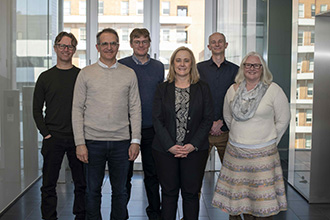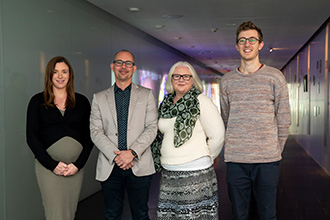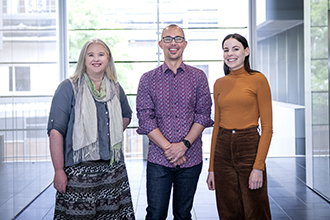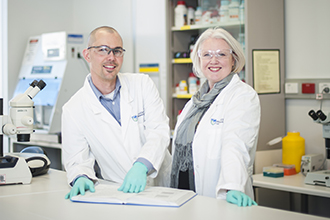Call MJ, Call ME, Wu X. Insights from deep mutational scanning in the context of an emerging pathogen.Biochemical Society Transactions. 2025;:10.1042/bst20253033
Wu X, Devine SM, Go M, Nguyen JV, Lu BGC, Loi K, Kuchel NW, Lowes KN, Mitchell JP, Lessene G, Komander D, Call ME, Call MJ. Divergent resistance pathways amongst SARS-CoV-2 PLpro inhibitors highlight the need for scaffold diversity. PLOS Pathogens. 2025;21(9):10.1371/journal.ppat.1013468
Black KA, Nguyen JV, Ramsey JR, Tovey JC, Cameron DL, Alexandrovics J, Glukhova A, Papenfuss AT, Call MJ, Young R, Call ME. Resolution of a T1-Like Bacteriophage Outbreak by Receptor Engineering. Molecular Biotechnology. 2025;:10.1007/s12033-025-01453-1
M. Bader S, Calleja DJ, Devine SM, Kuchel NW, Lu BGC, Wu X, Birkinshaw RW, Bhandari R, Loi K, Volpe R, Khakham Y, Au AE, Blackmore TR, Mackiewicz L, Dayton M, Schaefer J, Scherer L, Stock AT, Cooney JP, Schoffer K, Maluenda A, Kleeman EA, Davidson KC, Allison CC, Ebert G, Chen G, Katneni K, Klemm TA, Nachbur U, Georgy SR, Czabotar PE, Hannan AJ, Putoczki TL, Tanzer M, Pellegrini M, Lechtenberg BC, Charman SA, Call MJ, Mitchell JP, Lowes KN, Lessene G, Doerflinger M, Komander D. A novel PLpro inhibitor improves outcomes in a pre-clinical model of long COVID. Nature Communications. 2025;16(1):10.1038/s41467-025-57905-4
Cater RJ, Ryan RM, Oakhill JS, Czabotar P, Murphy JM, Call MJ. Structure, function, surf, repeat: A week at Lorne Proteins 2024. Structure. 2024;32(11):10.1016/j.str.2024.10.007
Wu X, Go M, Nguyen JV, Kuchel NW, Lu BGC, Zeglinski K, Lowes KN, Calleja DJ, Mitchell JP, Lessene G, Komander D, Call ME, Call MJ. Mutational profiling of SARS-CoV-2 papain-like protease reveals requirements for function, structure, and drug escape. Nature Communications. 2024;15(1):10.1038/s41467-024-50566-9
Ramesh S, Go M, Call ME, Call MJ. Deep mutational scanning reveals transmembrane features governing surface expression of the B cell antigen receptor. Frontiers in Immunology. 2024;15:10.3389/fimmu.2024.1426795
Borger JG, Ng AP, Anderton H, Ashdown GW, Auld M, Blewitt ME, Brown DV, Call MJ, Collins P, Freytag S, Harrison LC, Hesping E, Hoysted J, Johnston A, McInneny A, Tang P, Whitehead L, Jex A, Naik SH. Artificial intelligence takes center stage: exploring the capabilities and implications of ChatGPT and other AI‐assisted technologies in scientific research and education. Immunology and Cell Biology. 2023;101(10):10.1111/imcb.12689
Chandler NJ, Davey AS, Elazar A, Weinstein JY, Nguyen JV, Trenker R, Cross RS, Jenkins MR, Call ME, Fleishman SJ, Call MJ. De novo -designed transmembrane domains tune chimeric antigen receptor function. Acta Crystallographica Section A: Foundations and advances. 2023;79(a2):10.1107/s2053273323086722
Abbott RC, Iliopoulos M, Watson KA, Arcucci V, Go M, Hughes‐Parry HE, Smith P, Call MJ, Cross RS, Jenkins MR. Human EGFRvIII chimeric antigen receptor T cells demonstrate favorable safety profile and curative responses in orthotopic glioblastoma. Clinical & Translational Immunology. 2023;12(3):10.1002/cti2.1440






